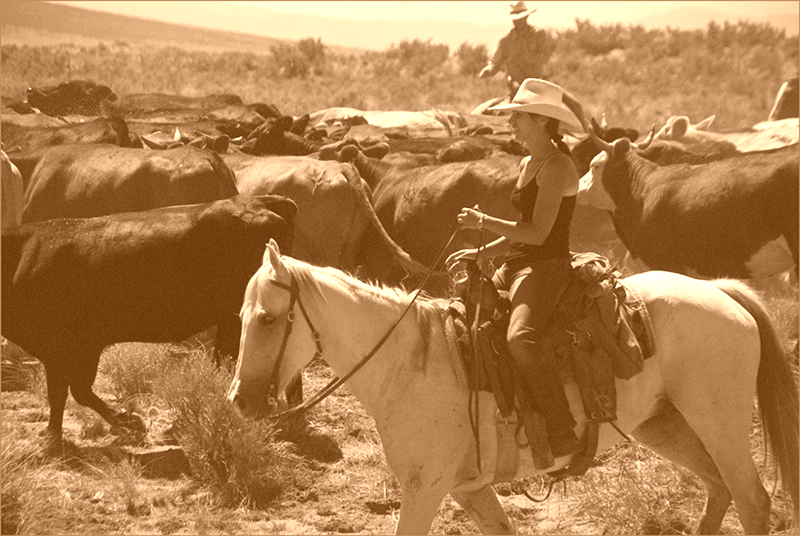Stand By Your Livestock – It Pays Big Dividends!
In an era of increasing human-wildlife conflicts, livestock owners are turning to an age-old solution with a modern twist: range riders. These dedicated individuals serve as on-the-ground guardians, working tirelessly to protect livestock from predators while promoting coexistence between humans and wildlife. The use of range riders has been gaining momentum in recent years, as ranchers seek sustainable and non-lethal methods to safeguard their herds.
With the December 2023 deadline for Colorado’s voter mandated restoration of gray wolves to the western part of the Centennial State approaching, preparing to live with a restored population of wolves is increasingly important. Given that range riders will probably become a significant focus of conflict reduction between wolves and livestock in Colorado, and thus a significant target for funding provided by the ‘Born To Be Wild’ wolf plate, we thought it’d be useful to summarize the rising trend of range riders and their vital role in protecting livestock.
A Traditional Practice Reinvented
The concept of range riding is not new. Historically, herders have employed riders to patrol grazing areas, ward off predators, and monitor livestock. However, the resurgence of this practice in contemporary livestock management is driven by innovative approaches and a growing understanding of wild carnivore behavior.
Coexistence & Conservation
Range riders embody a proactive approach to coexistence between livestock and predators. By actively patrolling grazing areas, they deter predators from approaching livestock, reducing the chances of conflicts. The riders also play a critical role in minimizing human-wildlife confrontations, safeguarding both livestock and native predator populations.
Non-Lethal Predator Deterrence
One of the primary advantages of employing range riders is the use of non-lethal predator deterrents. These riders employ a range of strategies, such as noise-makers, flashing lights, guard animals, and human presence to deter predators, rather than resorting to lethal measures such as trapping or shooting. This approach aligns with the principles of ethical and sustainable farming, promoting harmony between livestock production and ecological conservation.
Enhanced Animal Welfare
Range riders contribute to improved animal welfare by actively monitoring livestock for signs of distress, injury, or illness. They can swiftly identify and address any health issues or injuries, ensuring timely veterinary care for the animals. Additionally, the constant presence of range riders provides a sense of security to the livestock, reducing stress and anxiety among the herds.
Collaborative Partnerships
The successful implementation of range riding programs often relies on collaborative partnerships between livestock owners, conservation organizations, and land management agencies. These partnerships allow for the exchange of knowledge, resources, and expertise, fostering a collective effort to protect both livestock and wildlife.
Case Studies and Success Stories
Many case studies and success stories highlight the effectiveness of range riders in reducing livestock losses and promoting coexistence. For example, a study conducted in Montana, USA, demonstrated a significant decline in predator attacks on cattle herds because of the presence of range riders. Similar success stories have emerged from regions such as Alberta, Canada, and New South Wales, Australia.
Looking Ahead
As the use of range riders gains traction, it offers a promising solution to the complex challenges faced by livestock owners in balancing the needs of their herds with conservation efforts. By employing non-lethal deterrents and promoting coexistence, range riders are fostering a sustainable future for both livestock and wildlife. Continued research, investment, and collaboration are essential to further refine and expand the use of this age-old practice in modern livestock protection.
Sources:
1. National Geographic. (2020). “Riders on the Range.” Available at: https://www.nationalgeographic.com/animals/article/range-riders-montana-wolves-conservation
2. Defenders of Wildlife. (n.d.). “Range Riders.” Available at: https://defenders.org/range-riders
3. The Guardian. (2022). “Australia trial of range riders slashes livestock losses to predators.” Available at: https://www.theguardian.com/environment/2022/jan/24/australia-trial-of-range-riders-slashes-livestock-losses-to-predators



